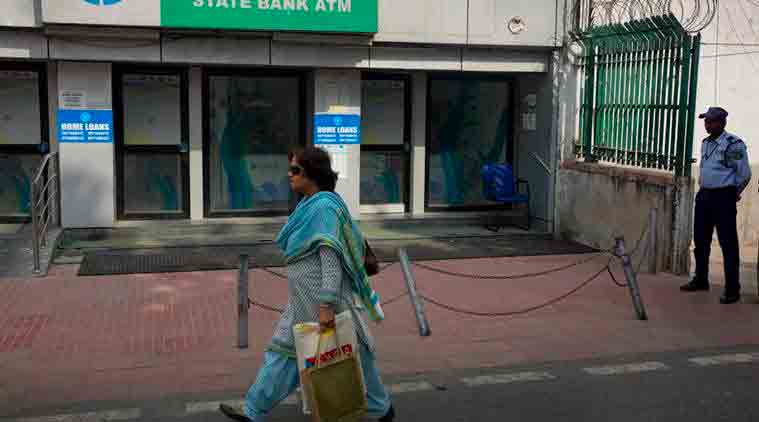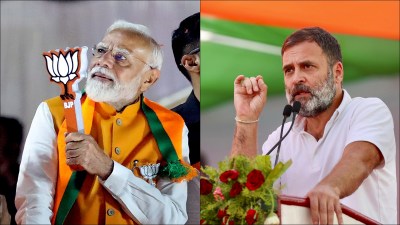- India
- International
What jammed the ATM: Secrecy and no Plan B
Many ATMs have three-four drawers, also called cassettes, in which notes — of Rs 100, Rs 500 and Rs 1,000 — are stacked.
 A woman walks past a closed ATM in New Delhi.
A woman walks past a closed ATM in New Delhi.
THE RESERVE Bank of India (RBI) has said the 4,000 currency chests across the country have adequate stocks of notes, but poor logistics and a time-consuming ATM recalibration process have resulted in massive public inconvenience. Senior bankers now say advance preparation and better back-office support could have mitigated this.
Many ATMs have three-four drawers, also called cassettes, in which notes — of Rs 100, Rs 500 and Rs 1,000 — are stacked. Some have just two. Each cassette can identify a particular denomination currency note given certain unique ‘pointers’, and based on the cash available, the ATMs are so programmed to dispense Rs 1,000, Rs 500 and Rs 100 notes in an appropriate combination.
WATCH VIDEO: PM Modi Reveals How He Planned Demonetisation Gradually In 10 Months
Now, till the cassette holders in the ATMs are reconfigured to identify the new currency notes of Rs 500 and Rs 2,000, they can hand out only Rs 100 notes. This means that instead of one Rs 1,000 note, an ATM has to give ten Rs 100 notes, and instead of one Rs 500 note, five Rs 100 notes.
“If the government and the RBI had increased the circulation of Rs 100 notes in the system over the past couple of months, the transition could have been smoother,” said a banker, who did not want to be named.

“Further, the ‘pointers’ for the new Rs 2,000 note could have been provided in advance, so that one of the three or four cassettes in the ATM could be reconfigured to identify it,” said another banker handling technology. “This could have been done without compromising on the secrecy,” the banker added.
Typically, every drawer or cassette in an ATM can contain 2,500 currency notes. An ATM with three cassettes can carry a maximum of 7,500 currency notes at any given time. Earlier, it was configured to contain Rs 100, Rs 500 and Rs 1,000 notes. Split equally, it could contain Rs 40 lakh.
Now, with just Rs 100 notes, even if all three cassettes are configured to read them, an ATM can contain only Rs 7.5 lakh. With banks unable to fill ATMs with Rs 500 and Rs 2,000 notes, customers have been withdrawing all Rs 100 notes, with many even reportedly hoarding, anticipating a prolonged shortage of required notes in the banking system.
Banks, which were in the dark about the government’s demonetisation move, are struggling to cope with the situation on several fronts. Recalibration of ATMs is a gargantuan exercise which is expected to take, as admitted by Finance Minister Arun Jaitley, up to three weeks.
WATCH VIDEO: India Queues Up Outside ATMs
“The new note specifications are released by ATM OEM manufacturers after extensive testing. To have these recalibrated on all 220,000 ATMs in the country will take some time as engineers will have to physically visit the ATMs for recalibration,” said Ramaswamy Venkatachalam, Managing Director, Fidelity Information Services (FIS), a banking and payments technology provider.
The cash logistics industry employs 40,000 people and 8,800 cash vans to refill 2.20 lakh ATMs in India spread over 650 districts. In a day, this industry serves about 25,000 ATMs. The logistics industry has not only withdrawn old currency notes but also modified the switches of ATMs to dispense mostly Rs 100 currency notes which get depleted in minutes. Over 50 per cent of ATMs in metros and 75 per cent in semi-urban areas were non-functional at any point of time.
“Banks were not told about the size of the notes or the recalibration issue in advance. They should have anticipated such problems but there was no coordination or interaction with the banks ahead of the announcement,” said the CEO of a nationalised bank.
“It’s a logistics and recalibration issue. Of course, we have got time up to end of December. But the initial rush is because people need money to meet their immediate needs. I would think the next one week would be challenging. It’s challenging for people and banks. For us, there’s no closing time. Clear instructions have been given that till the last customer goes, it has to continue… even if it goes right up to midnight,” said a senior official of a bank.
Over 40,000 people have been putting in extra hours for the last few days to refill the ATMs. “This task is unprecedented, and the nation has to come together and see the efforts made by the cash logistics industry and the bank employees to ensure that the public inconvenience is reduced,” said Rituraj Sinha, president of the Cash Logistics Association of India.
WATCH VIDEO: Demonetisation: Arvind Kejriwal, Kapil Sibal, Akhilesh Yadav Slam Modi Govt
Worried over hoarding of small notes, the RBI on Sunday assured that “enough cash in small denominations is also available”. “The RBI urges that public need not be anxious; need not come over to banks repeatedly to draw and hoard; cash is available when they need it,” it said.
When will the crisis blow over? Serpentine queues outside banks and shortage of notes are expected to continue till all ATMs are up and running. “We are in constant touch with the banks and the cash logistic companies to sort out issues on the field quickly and maximise the ATM touch points,” said Venkatachalam.
Small traders and people from the lower strata of the society are severely hit by the currency move. “Go to any queue outside a bank branch, most of them will be domestic helps, drivers, labourers and people without bank accounts. I feel sorry for them. They had to forego one day’s work to stand in the queue for hours to get cash for their daily needs,” said a senior bank official.
Apr 25: Latest News
- 01
- 02
- 03
- 04
- 05








































